This easy beef tenderloin recipe is all you need to make the juicy, tender roast beef tenderloin with a beautiful golden-brown crust. This no-fail method takes the guesswork out of this special occasion recipe.
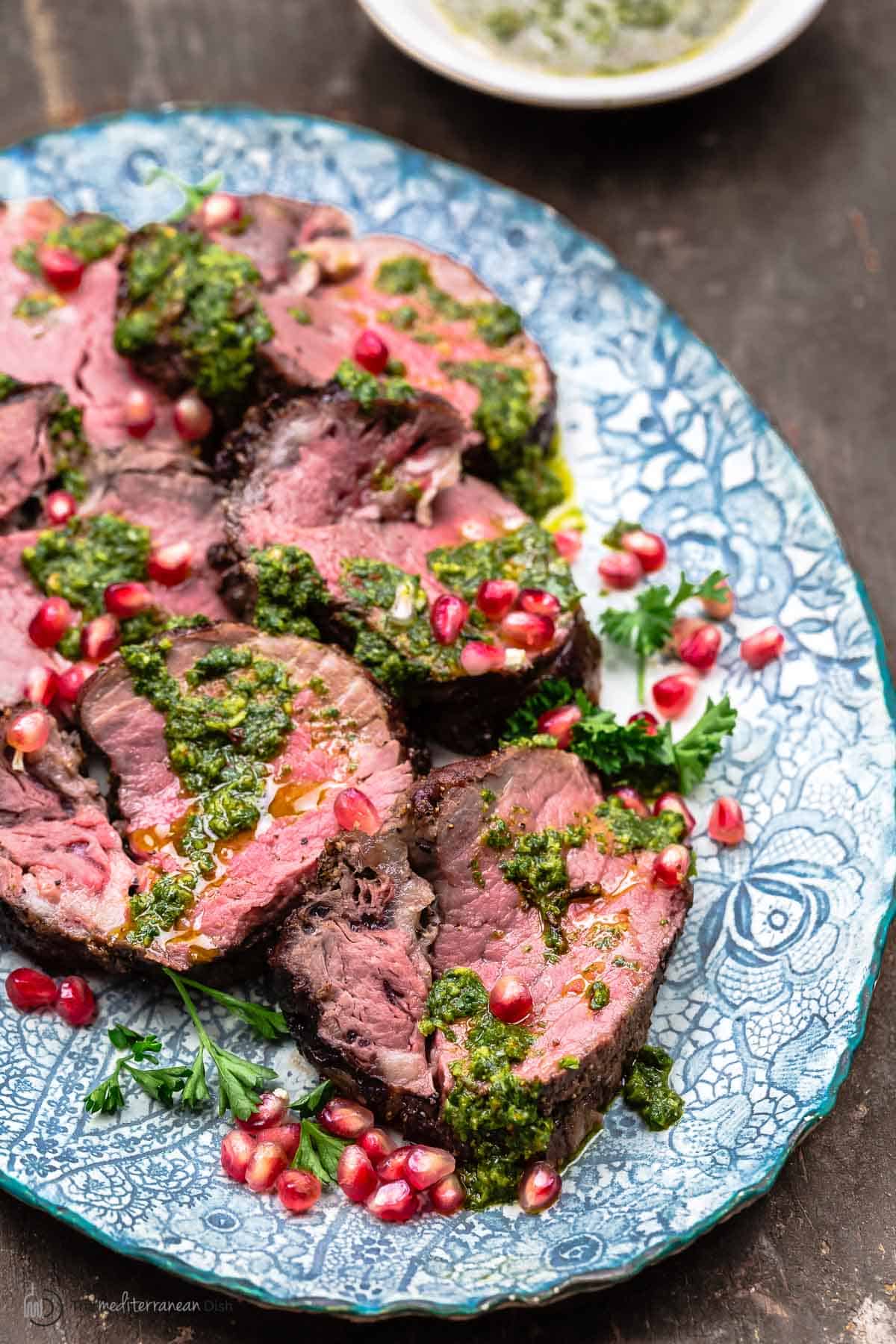
If you’re looking for an elegant centerpiece for a special dinner to impress, look no further than beef tenderloin! This cut of meat comes from the loin—the same section as filet mignon. It’s a lean muscle that does not get much exercise, so it’s the most tender, buttery meat you can source.
And this prized piece deserves the star treatment! A slow roast in a low-heated oven keeps it perfectly juicy and flavorful, with a broil in the final few minutes to develop a deeply caramelized crust. You only need oil, salt, and pepper for a wow-worthy entree that’s worthy of a special celebration.
You can stop there, but I love to make Moroccan chermoula while the meat rests. The bright, garlicky, and herby sauce brings the flavor to the next level, with a touch of pomegranate seeds to add a pop of color and bright bursts of flavor. A few extras transform this beef tenderloin recipe into a holiday dinner centerpiece.
Table of Contents
- Beef Tenderloin Ingredients
- Picking the Right Beef: What Type of Tenderloin to Buy?
- How to Cook Beef Tenderloin
- The night before (if possible, or at least 1 hour before roasting): Prep the tenderloin.
- The day of: Roast the tenderloin.
- Slice and serve.
- Beef Tenderloin Temperature Guide
- Leftovers and Storage
- What to Serve with this Beef Tenderloin Recipe
- You’ll Also Like: Special Occasion Roasts
- BEST Beef Tenderloin Roast Recipe Recipe
Beef Tenderloin Ingredients
You only need four ingredients for the simple version of this roast beef tenderloin recipe: beef, salt, pepper, and olive oil. That’s it!
But if you want to bring a little wow-factor to your table and balance the richness of the meat with some fresh flavors, take the extra step of making an herby chermoula and top it with pomegranate seeds. If you’re new to pomegranate’s don’t worry! I wrote down the ins and outs of How to Cut a Pomegranate to help you through moments just like this one!
For the Beef Tenderloin
- Meat: Look for (about 3 pounds), excess fat-trimmed (a little is okay for flavor, see note)
- Seasoning: Tenderloin has so much perfectly savory flavor on its own. I enhance it without overpowering–just kosher salt and black pepper. Truly all you need!
- Oil: A final brush of quality extra virgin olive oil just before broiling gives it a perfectly golden crust.
For Serving (Optional)
- Chermoula sauce: This punchy, herbaceous, garlicky Moroccan sauce dials up the flavor and gives your serving platter a vibrant pop of color. You can use a store-bought red or green variety or make your own. To make it, you’ll need parsley, cilantro, garlic, ground coriander, red pepper flakes, paprika, ground ginger, saffron (optional), salt, fresh lemon, and extra virgin olive oil.
- Pomegranate seeds: Sprinkled on as a garnish for a final pop of bright flavor and color.
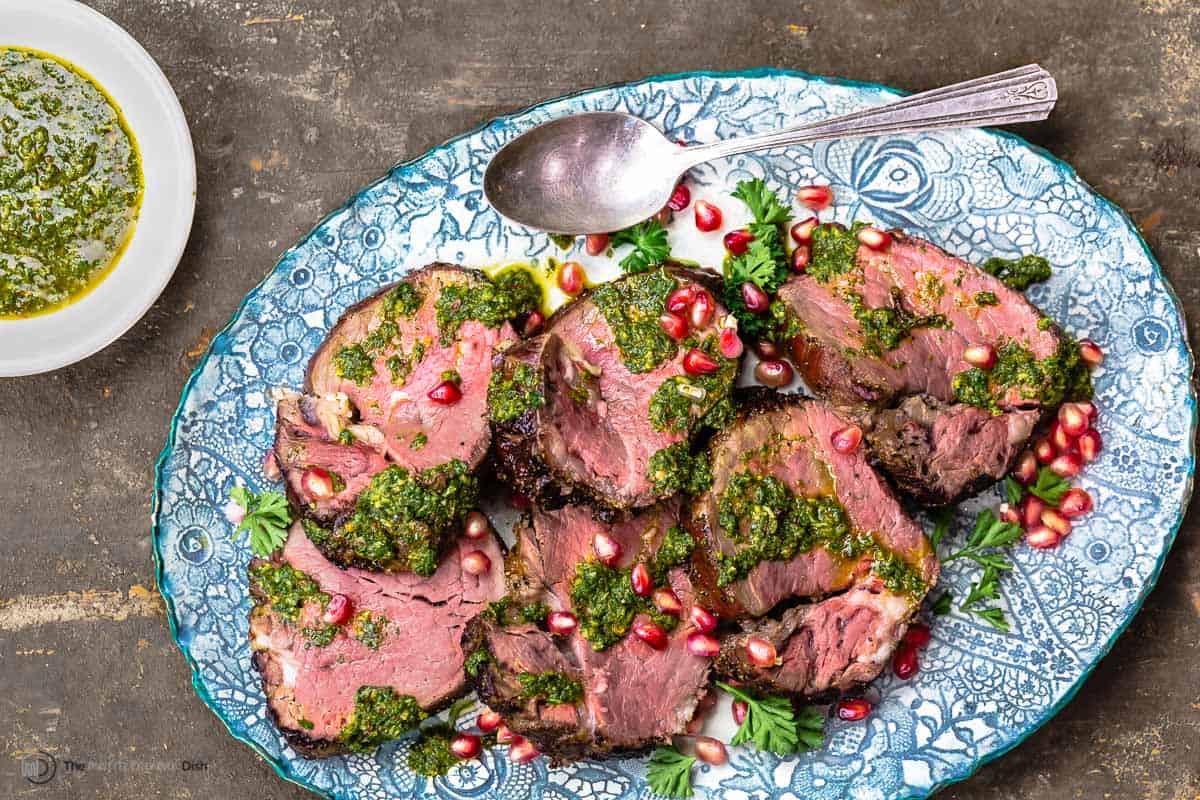
Picking the Right Beef: What Type of Tenderloin to Buy?
I love using the center-cut of the tenderloin, also known as “chateaubriand,” the same cut from which filet mignon steaks come. It’s extra tender with a uniform, cylindrical shape. Usually somewhere between 2 and 3 pounds, it’s perfect for serving up to 8 people.
And, because of its uniform shape, center-cut beef tenderloin cooks evenly and is easy to carve into beautiful slices—no special knife skills needed! If you don't want to trim a whole tenderloin to get to the center, simply ask your butcher to do it for you.
How to Cook Beef Tenderloin
This beef tenderloin is slow-roasted at a low temperature, then finished under the broiler. The low and slow method gives it a buttery, juicy interior, and the final broil gives it that beautiful crust. It’s easier than it looks! Here’s how to cook beef tenderloin:
The night before (if possible, or at least 1 hour before roasting): Prep the tenderloin.
- Trim the fat. The tenderloin has a tough, silvery membrane on the surface of the meat called the silver skin. Use the tip of your knife to cut into the silver skin, then slide your knife underneath it. Pull the skin back with one hand while using the knife with the other to remove it, angling the knife slightly upward to and cutting as close to the skin as possible. Too much fat will make the meat tough, but a little is okay—it will give the meat a nice flavor.
- Season and truss the tenderloin. Sprinkle the beef on all sides with kosher salt and black pepper (two five-finger pinches or so each). Tie kitchen twine pieces all down the tenderloin, leaving 1-inch between each piece. This helps the meat maintain its shape.
- Air dry the tenderloin in your fridge. Line a large sheet pan with a wire rack. Put the tenderloin on top and refrigerate uncovered for one night. (If you don’t have the time, you can season it and allow it to rest for at least 30 minutes to 1 hour.)
The day of: Roast the tenderloin.
- Get ready. Position one oven rack in the middle of your oven and one at the top third, about 6-inches away from the broiler. Heat to 225°F.
- Slow-roast the tenderloin. Place the tenderloin, still tied with twine and on the rack-lined sheet pan, on the center rack of your oven. Roast until its internal temperature is cooked to your taste (see “Beef Tenderloin Temperature Guide” below). Keep in mind, you’ll want to remove the roast from the oven when it’s 10 degrees below your desired level of doneness. The temperature will come up both under the broiler and while it rests. Start checking on it at the two hour mark, but this can take up to 3 hours depending on the size of your tenderloin. Remove the meat from the oven.
- Make the golden crust. Turn the broiler on. Brush the tenderloin on all sides with a thin layer of olive oil. Place the tenderloin back in the oven, this time on the top rack under the broiler. Use tongs to turn the tenderloin every few seconds until browned on all sides, about 2 minutes in total.
- Rest. Allow the roast beef tenderloin to rest for about 15 to 20 minutes or so.
Slice and serve.
- If serving the roast with the chermoula sauce, make it while the meat rests. It only takes about 5 minutes.
- Slice. Once the meat has rested for at least 15 minutes, cut the twine off and discard. Slice the tenderloin crosswise into 1-inch-thick rounds, using the twine marks to guide you.
- Serve. Arrange the meat slices on a platter and drizzle with a bit of the chermoula sauce, if you like. Garnish with pomegranate seeds for a festive pop of color!
Beef Tenderloin Temperature Guide
Beef tenderloin roast is best served rare or medium-rare with an internal temperature at between 125°F and 135°F, respectively. Use a meat thermometer to determine if the roast is done, and remember that the temperature of the meat will rise under the broiler and as it rests before serving. Here is a quick guide:
- Rare: 125°F after the meat has rested. Remove the roast from your oven when its internal temperature reaches 115°F.
- Medium-Rare: 135°F after the meat has rested. Remove the roast from the oven when its internal temperature reaches 125°F. I recommend medium rare for this beef tenderloin recipe.
- Medium: 145°F after the meat has rested. Remove the roast from the oven when its internal temperature reaches 135°F.
- Medium-Well: 155°F after the meat has rested. Remove the roast from the oven when its internal temperature reaches 145°F.
Leftovers and Storage
Leftover beef tenderloin will keep in an airtight container in your fridge for up to 4 days. Enjoy at room temperature or reheat it briefly in a 350°F oven until just warmed through.
Or pan-fry in a skillet with a dash of extra virgin olive oil—you can even give it a whole new life by substituting it for the meat in this antipasto chicken sandwich or loaded grilled roast beef sandwich.
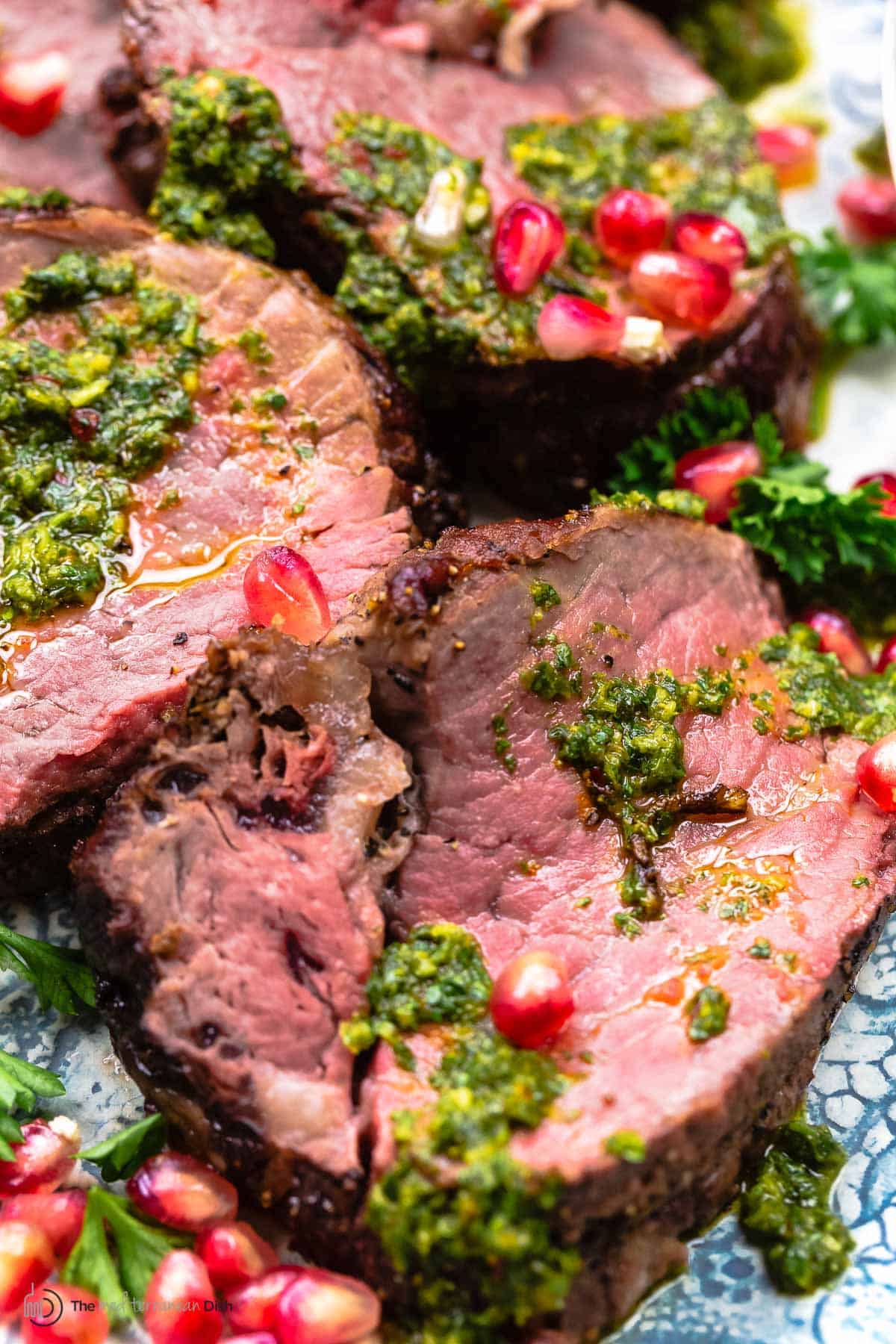
What to Serve with this Beef Tenderloin Recipe
Nothing beats roasted vegetables alongside a beautiful tenderloin. The bright and herby Chermoula sauce would go beautifully alongside Italian Roasted Vegetables, which include baby potatoes so the meat-and-potato folks will be satisfied. You can make them before roasting the tenderloin, then gently re-warm while the meat is resting.
If you have any vegetarians on the guest list, make cauliflower steaks in advance and rewarm alongside the roast vegetables. The big cauliflower slabs make for a show-stopping dish that will make everyone feel just as important.
Your oven will be in high-demand, so go for a dessert you can prepare the day before. Greek honey cake, mahalabia (rose water milk pudding), and chocolate olive oil cake all come to mind.
You’ll Also Like: Special Occasion Roasts
Meat and Poultry
Roast Rack of Lamb Recipe with Garlic and Herb Crust
Mediterranean Diet Recipes
Garlic and Herb Roast Turkey Breast (Extra Juicy!)
Browse all Mediterranean recipes.
Visit Our Shop
Bundle and Save!
Try our favorite Red Chermoula and Harissa Spread by by Villa Jerada.
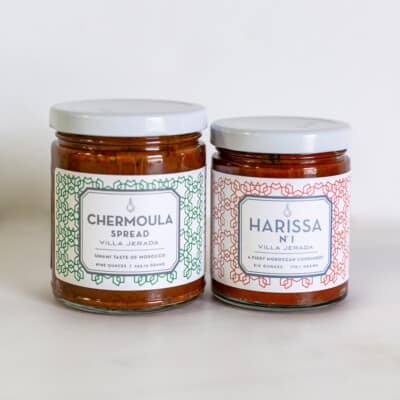
BEST Beef Tenderloin Roast Recipe
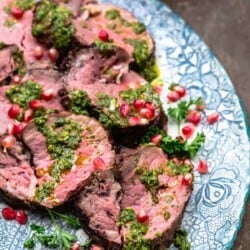
Equipment
- kitchen twine
- wire cooling rack
Ingredients
- 1 center-cut beef tenderloin, about 3 pounds, excess fat-trimmed (a little is okay for flavor, see note)
- Kosher salt
- Black pepper
- Extra virgin olive oil
Optional Serving Suggestions:
- Chermoula sauce (optional)
- Pomegranate seeds, for garnish (optional)
Instructions
- The night before (if possible): Season and truss the tenderloin. Sprinkle the beef on all sides with kosher salt and black pepper (two five-finger pinches or so each). Tie kitchen twine pieces all down the tenderloin, leaving 1-inch between each piece. This helps the meat maintain its shape.
- Air dry the tenderloin in your fridge. Line a large sheet pan with an oven-safe wire rack. Put the tenderloin on top and refrigerate uncovered for one night. (If you don’t have the time, you can season it and allow it 30 minutes to 1 hour.)
- The day of: Position one oven rack in the middle of your oven and a second one at the top third, about 6-inches away from the broiler. Heat to 225°F.
- Slow-roast the tenderloin. Once the oven comes to temp, place the tenderloin, still tied with twine and on the rack-lined sheet pan, on the center rack of your oven. Roast until its internal temperature reaches 10 degrees below your desired final level of doneness. It will continue cooking under the broiler and as it rests. That means you should remove from the oven around 115°F for rare, 125°F for medium-rare (recommended). Start checking on it at the two hour mark, but this can take up to 3 hours depending on the size of your tenderloin.
- Make the golden crust. Once you've removed the tenderloin from your own, turn the broiler on. Brush the tenderloin on all sides with a thin layer of olive oil. Place the tenderloin back in the oven, this time on the top rack under the broiler. Use tongs to turn the tenderloin every few seconds until browned on all sides, about 2 minutes in total.
- Rest. Remove the roast from the oven and allow the meat to rest for about 15 to 20 minutes.
- Make the chermoula sauce (optional). While the roast rests, make the chermoula sauce (it only takes 5 minutes.)
- Slice. Once the meat has rested for at least 15 minutes, cut the twine off and discard. Slice the tenderloin crosswise into 1-inch-thick rounds, using the twine marks to guide you.
- Serve. Arrange the meat slices on a platter and drizzle with a bit of the chermoula sauce and garnish with pomegranate seeds for a festive pop of color!
Video
Notes
- On trimming: Too much fat will make the meat tough, but a little is okay–it will give the meat a nice flavor. The tenderloin has a tough, silvery membrane on the surface of the meat called the silver skin. To remove excess fat:
- Use the tip of your knife to cut into the silver skin, then slide your knife underneath it.
- Pull the skin back with one hand while using the knife with the other to remove it, angling the knife slightly upward to and cutting as close to the skin as possible.
- Which beef cut to choose? For best results, use the middle section of the tenderloin, known as “center-cut tenderloin” or “chateaubriand.” It a large, cylindrical piece that is uniform in shape and is easier to cook evenly than a whole tenderloin. (You can also ask your butcher for this cut).
- How do you know when your roast is ready? Beef tenderloin roast is best served rare or medium-rare or when its internal temperature after resting reaches 135 degrees F, which is how the recipe is written. However, you can allow more time in the oven if you like your meat more done.
- Beef Tenderloin Temperature Guide:
- Rare: 125°F after the meat has rested. Remove the roast from your oven when its internal temperature reaches 115°F.
- Medium-Rare (recommended): 135°F after the meat has rested. Remove the roast from the oven when its internal temperature reaches 125°F.
- Medium: 145°F after the meat has rested. Remove the roast from the oven when its internal temperature reaches 135°F.
- Medium-Well: 155°F after the meat has rested. Remove the roast from the oven when its internal temperature reaches 145°F.
- Meet needs rest too! Don’t skip this step–it allows the juices to reabsorb so the meat is more flavorful.
- Leftovers and storage. Once cooled, you can store the leftovers in the fridge in a tight-lid container for up to 4 days. Enjoy it at room temperature or reheat briefly in a medium-heated oven or on the stovetop in a skillet with a tiny bit of extra virgin olive oil.
- Visit our shop to browse quality Mediterranean ingredients including olive oils, honey, jams, and spices.

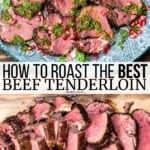

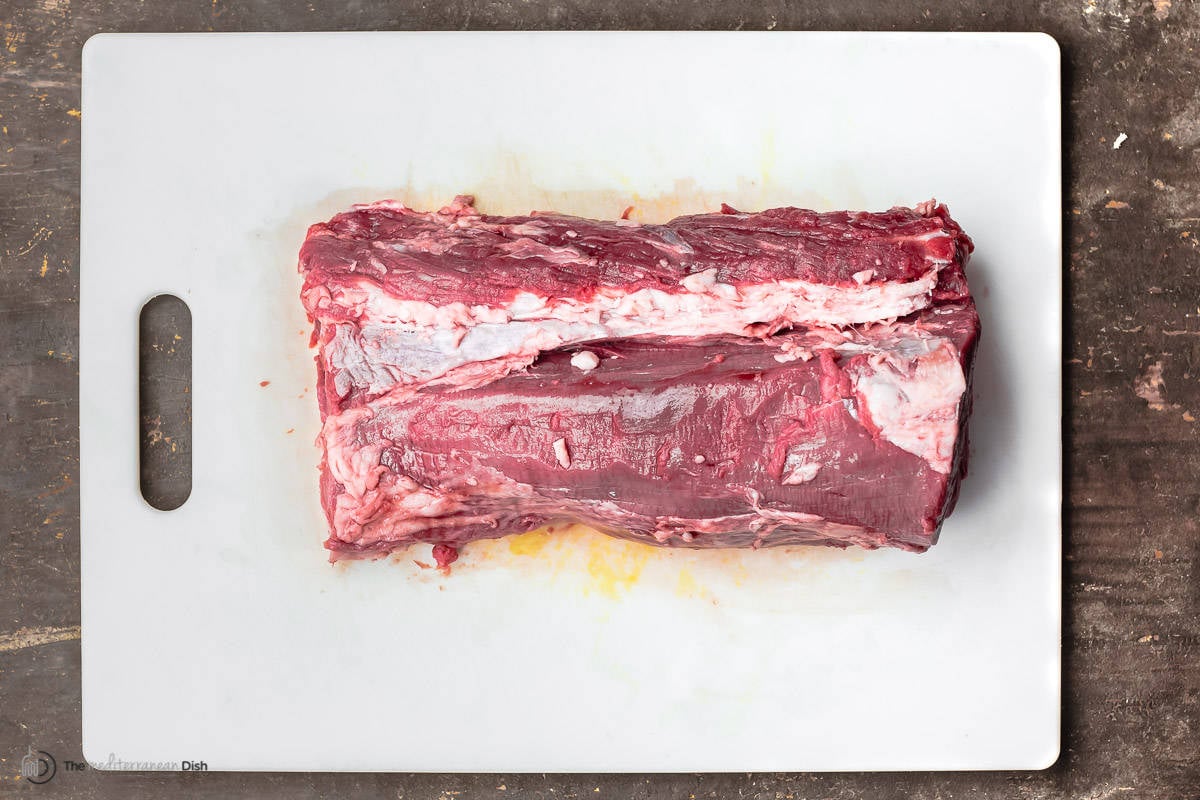
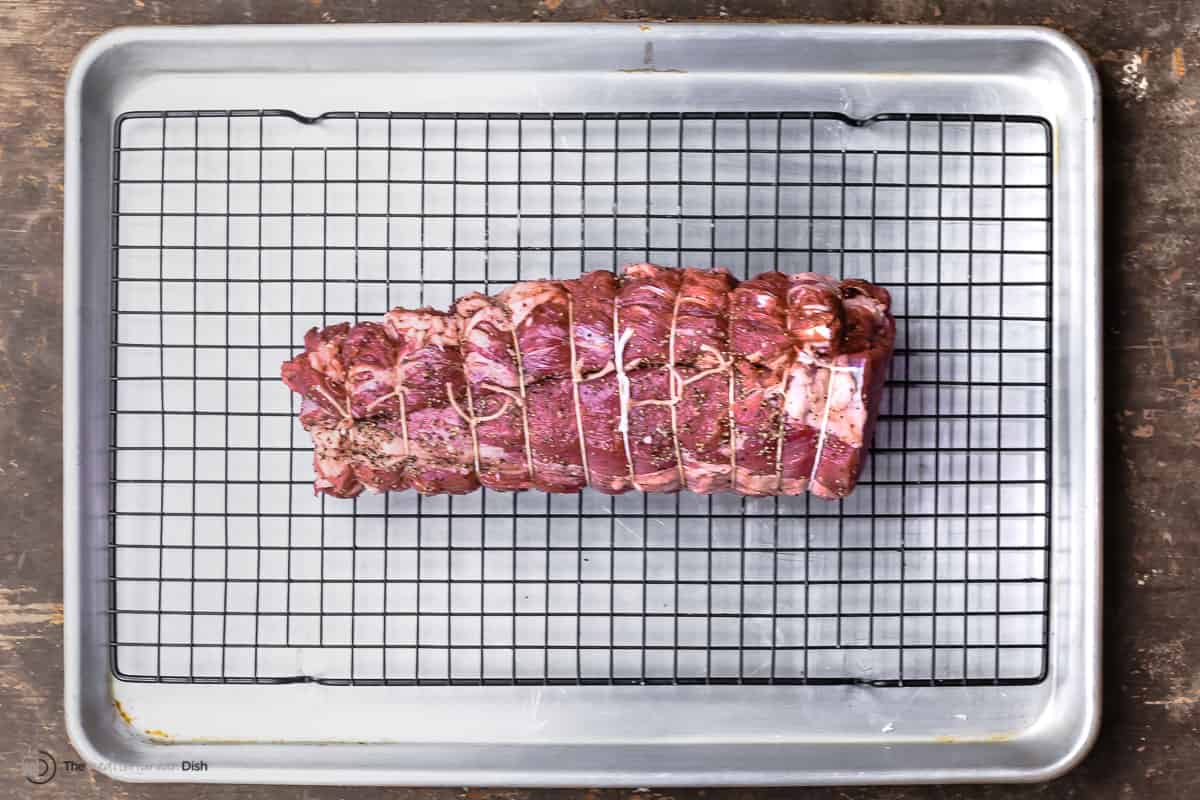
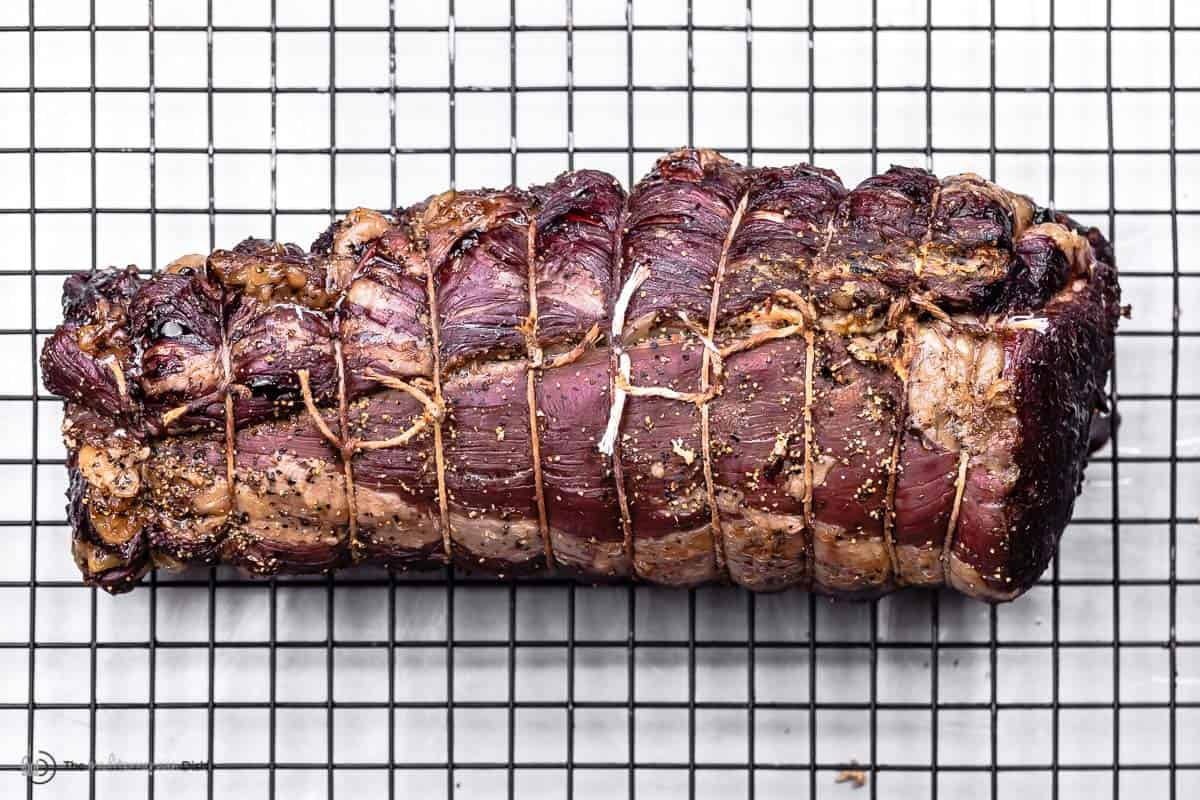
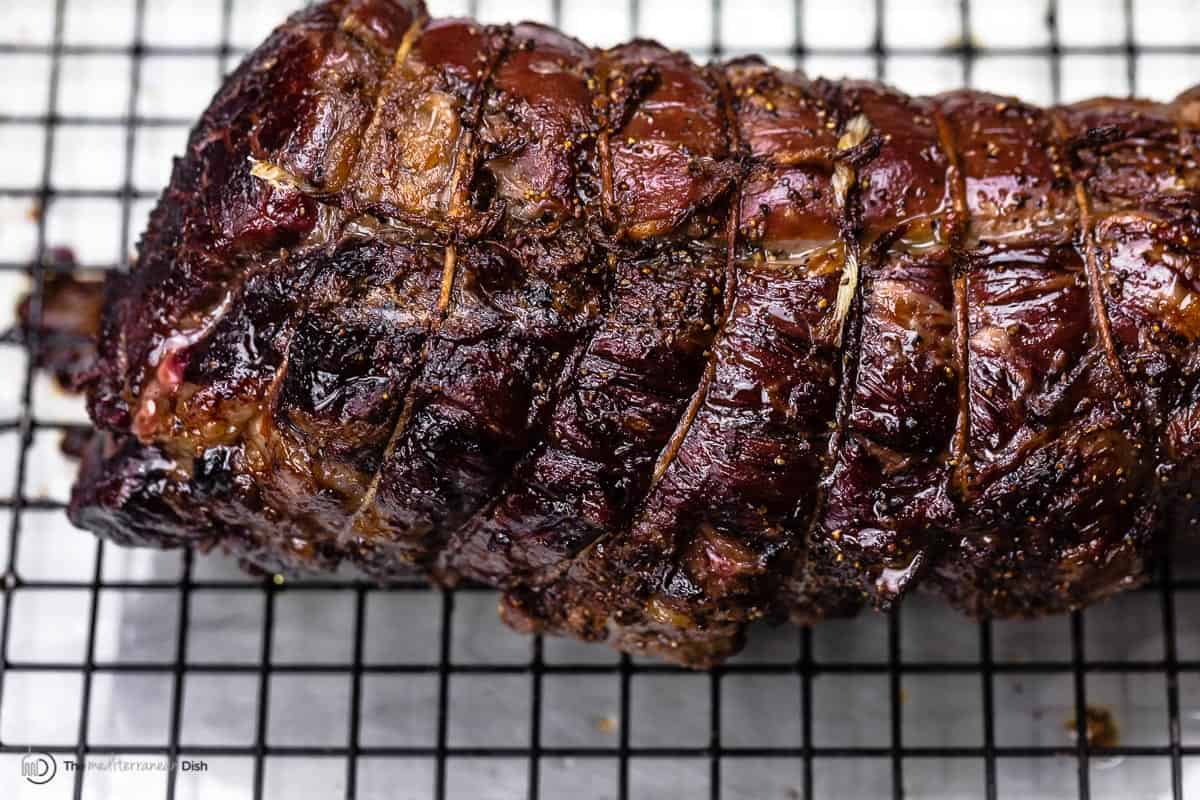
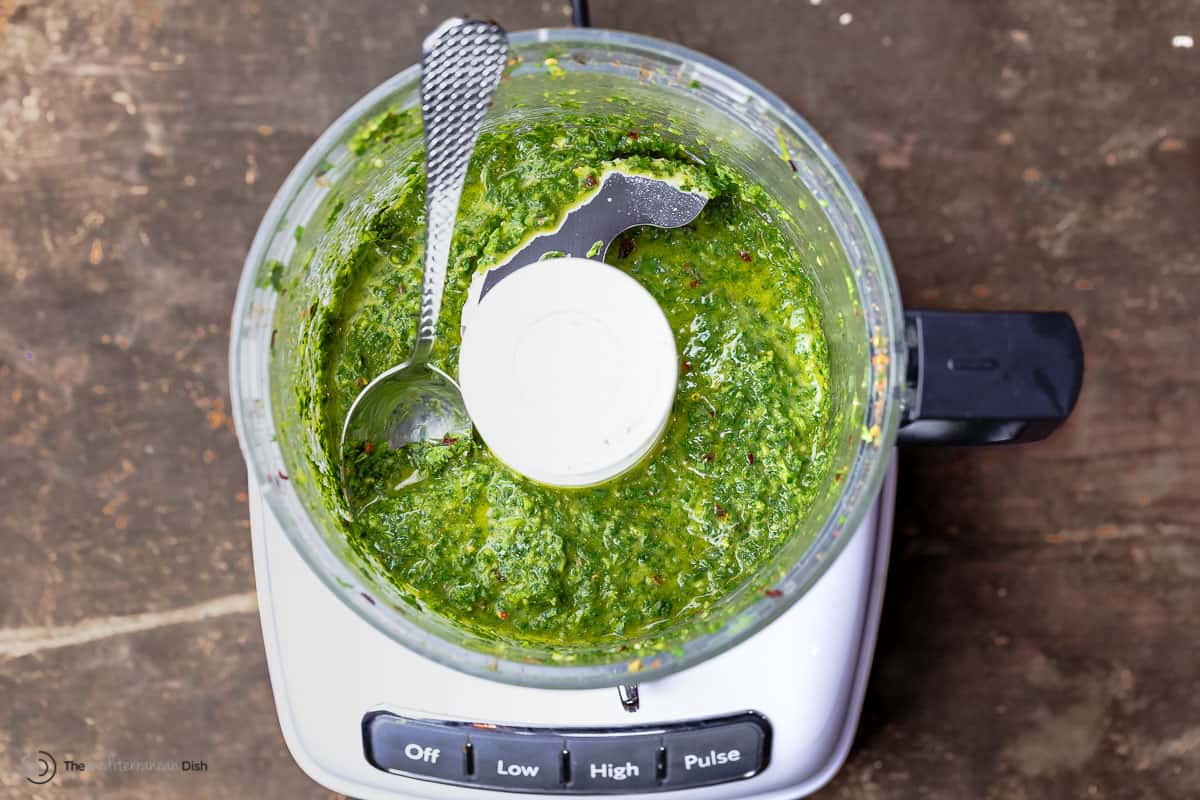
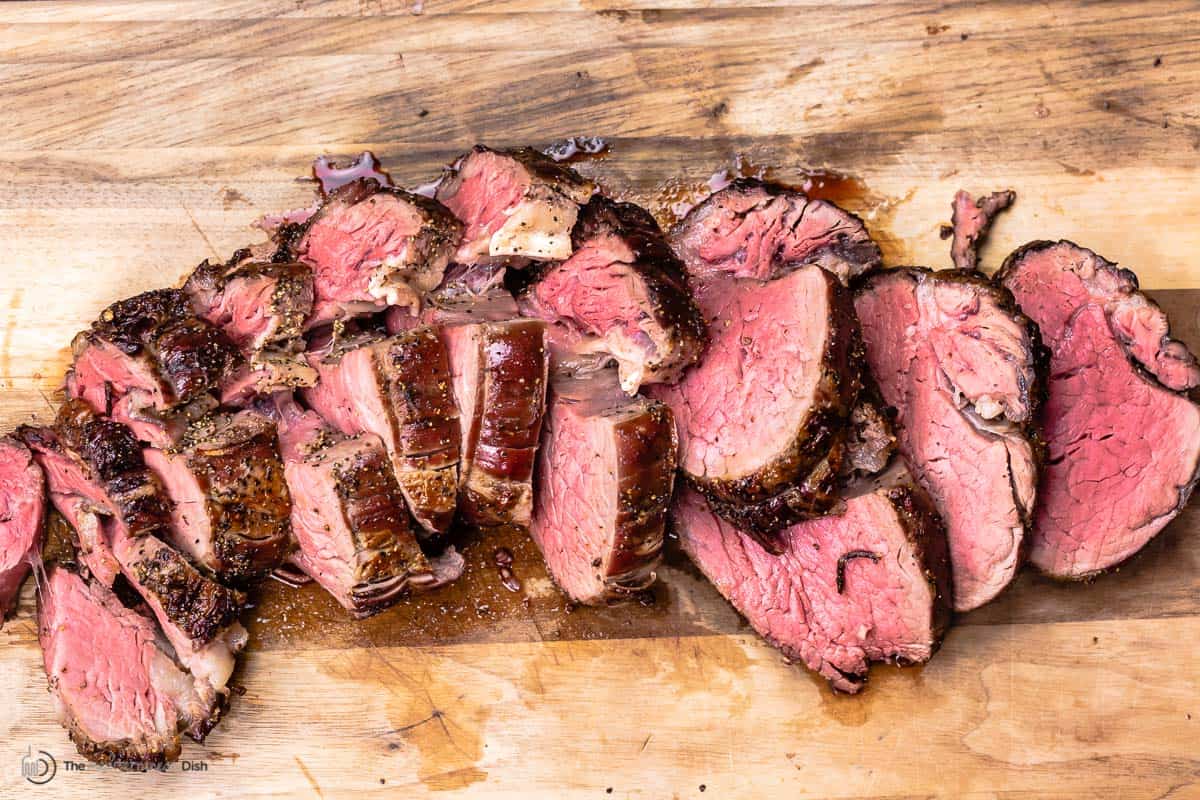
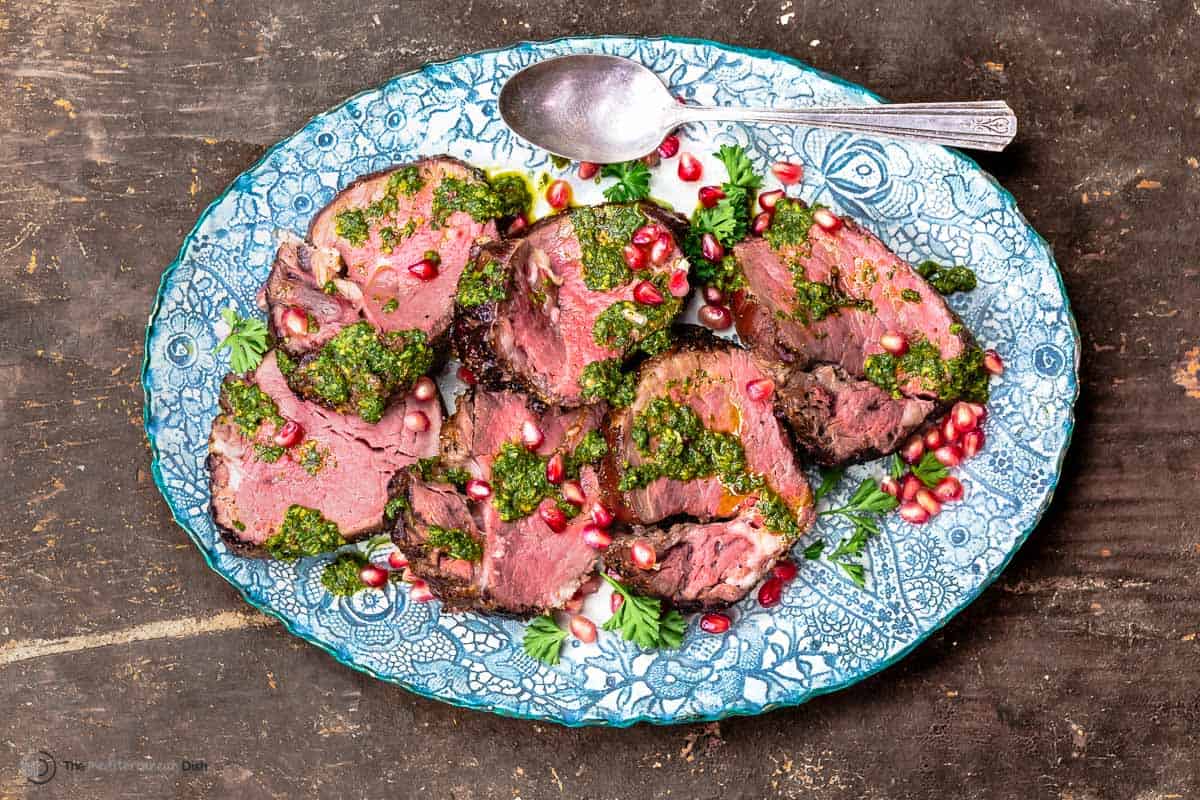
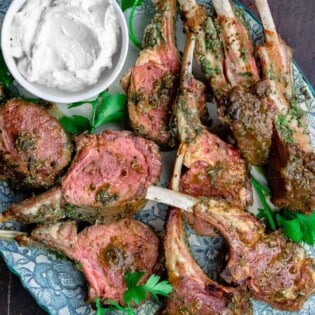
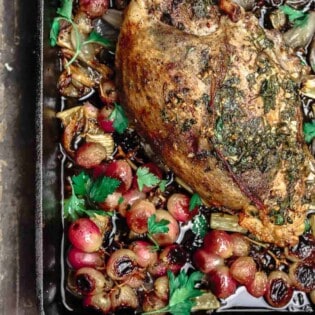
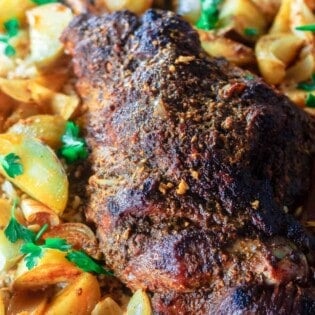
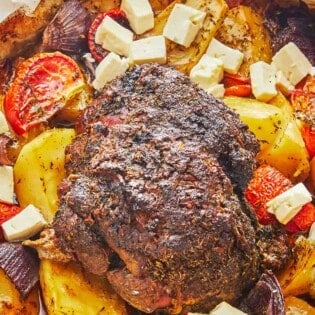
This was fabulous!!! Thank you so much!
Followed directions exactly - turned out perfectly. I will no longer be hysterically anxious about cooking such an expensive cut of meat. I know you're supposed to cook meat at room temperature - but I only had an hour to spare to leave it out on the kitchen counter, so the meat came up only to 50 degrees when I popped it in the oven. It turned out fine.
I'm so glad the recipe worked so well for your! You're a tenderloin expert now!! 🙂
50min per lb is not a good idea…please review. 15-20min max based on my now ruined tenderloin 5lb at 3hrs was 160degree would have cooked 4hrs had followed the advice and not checked the meat. My mistake…But you should correct the advice of 50min per lb.
I'm so sorry that happened, Dave. Ovens do vary, so I'm thinking that may have been the issue here as we have not experienced that with our ovens.
Cooked a 5lb tenderloin at 225 as directed…3hrs is meat was 160. I’m w questioning the 50min per 1lb direction. Check your meat people!
Thanks for the feedback, Dave. Ovens temps can vary from oven to oven, so I definitely agree that everyone should keep an eye on the tenderloin throughout process and adjust the time (or even the temp a bit) accordingly.
Have not made this yet - before roasting, do you take the meat out of the fridge to let it come to room temp? Or do you go straight from fridge to oven?
Hi, Crystal. I typically do, but I don't know if that would necessarily make or break this recipe.
Looking for further clarification on this. Typically you do allow the tenderloin to rest at room temperature before putting in the oven? Or typically go straight from the refrigerator to oven? Thanks!
Hi, Chris. As mentioned above, I personally let it come to room temperature first, but others have taken it right from fridge to oven with great results.
I wondered the same thing, but went straight from fridge to oven and it worked perfectly!
The roast was excellent! We cooked it until internal temp was 129 degrees. It was evenly cooked throughout. We did not make the sauce, or use any sauce for that matter. Process is time consuming, but we'll worth it.
Thanks, Sandy!
If I am cooking for 16, I need a big tenderloin - like 5lbs right? How long do I cook that at 22(* for?
Hi, Rae. Generally speaking, slow-roasted tenderloin in a 225 degrees F heated oven will take 50 minutes per pound for a medium-rare roast. Of course, roasting time will vary depending on your oven, and the degree of doneness you’re trying to achieve. I highly recommend using a meat thermometer to test for doneness. The internal temperature should be 135 degrees F after the meat has rested.
Have you ever use a different kind of beef for this recipe? I was going to buy it today..lol..but, it was $78 for 3 pounds.
I thought I try a different kind with this same recipe though. By the way..I have been loving a lot of your recipes so far.
Thanks!
Hi, Sue. I have not tried this exact preparation method with another cut of beef, but it may work, depending on what you purchase. You will just have to do a little research on that. The chermoula and sprinkle of pomegranate seeds would be delicious on any cut beef, though :).
Do you think I could use an electric roaster for this?
Hi, Jackie. I'm sure you could. I would just refer to the instructional manual/cookbook that came with your electric roaster for some guidance on time/temp.
Just follow Suzy's instructions and the meat will do its thing. The Chermoula sauce elevates the taste to another level. It just looks pretty on the dinner table this Christmas season, and tastes even better. Still enjoying the leftovers!
Thanks, Brian!
This recipe is my favorite so far! Delicious!
Yay! Love to hear it!
The family is coming for Christmas dinner. This will be our main dish! Can't wait!
Awesome! Thanks, Rosanne!
Hi there! Question: do you leave all the salt on the tenderloin? Or do you brush some off before roasting? Looks delicious!!
Hi, Kari. No need to brush off the salt before cooking. Enjoy!
The reverse-searing was a game-changer! This is the BEST!
Thanks, Natalie!
I will use this way of roasting from now on. Thank you so much. You always have such a taste new take on traditional foods. I so appreciate you.
Awww! I appreciate you to, Emily! Thanks for the kind review!
This beef tenderloin is SO good! It turned out so juicy and tender, thank you so much Suzy! This will be one I cook many times! I might even cook this on Christmas!
Awesome! Happy Holidays, Christina 🙂
So tender and delicious! This was my first time trying reverse searing and it turned out great! The chermoula sauce added great flavor.
Thanks, Adam!